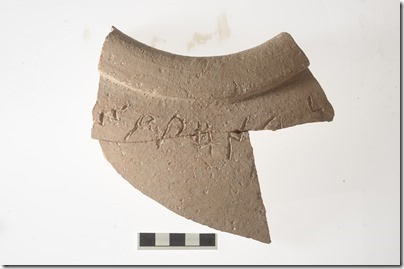A new AP story promotes the claim by Eli Shukrun that he discovered King David’s citadel. For someone familiar with these excavations, the AP account is anything but straightforward. Here’s a simple explanation: Shukrun is identifying the fortifications around the Gihon Spring with the Jebusite fortress of Zion.
What is the Jebusite fortress of Zion? It’s not very clear from the biblical account. Either it is the city as a whole or the king’s palace. Here is the relevant passage from 2 Samuel 5:6-9:
The king and his men marched to Jerusalem to attack the Jebusites, who lived there. The Jebusites said to David, “You will not get in here; even the blind and the lame can ward you off.” They thought, “David cannot get in here.” 7 Nevertheless, David captured the fortress of Zion, the City of David. 8 On that day, David said, “Anyone who conquers the Jebusites will have to use the water shaft [tsinnor] to reach those ‘lame and blind’ who are David’s enemies.” That is why they say, “The ‘blind and lame’ will not enter the palace.” 9 David then took up residence in the fortress and called it the City of David. He built up the area around it, from the supporting terraces inward.
Didn’t Shukrun and Reich excavate this beginning about 15 years ago and concluding about 2 years ago? Yes.
What makes this news? While these fortifications have always been ascribed to the Canaanite inhabitants of Jerusalem from 1800 BC, Shukrun is now making a direct claim that these were protecting the city when David arrived in 1004 BC.
What fortifications did they find? They excavated a massive tower protecting the Gihon Spring, another tower built next to a pool (see photo in the story), and a parallel set of walls leading up the hill.
Is this the same thing as Warren’s Shaft? Not quite. It’s the same idea—David’s men entered the city through a subterranean tunnel—but they believe that the vertical portion of Warren’s Shaft was not known until after the time of David. Instead, Shukrun believes that David’s men came via another section of the multi-part water system.
What does Shukrun’s partner Ronny Reich think? He is more hesitant to apply the biblical name, in part because of the lack of tenth-century pottery found in the excavations. But the walls didn’t disappear for a few centuries and then re-appear, so he suspects that the tenth-century pottery was removed by later inhabitants.
Do you agree? Yes and no. First, I find it quite reasonable that the water system and defensive towers were in use when David arrived. It seems likely that the tsinnor that Joab entered the city through is part of this complex. Second, the water system should not be equated with David’s palace. It’s not clear to me that this is what the article is saying, but the lack of clarity creates confusion. Shukrun is not saying that he found David’s home; he is claiming that he discovered a portion of the city that David conquered. That’s not news and it’s only controversial for those who don’t believe the biblical account of David’s conquest is accurate.
What is behind this recent announcement? The article claims that the visitor center only opened last month. I’m not sure what that means, since the site has been open continuously for the last 15 years, but it may explain why the news reporter chose to do the story. Shukrun is now working as a lecturer and tour guide and free publicity is always good. (If your group is looking for an extra special thing to do in Jerusalem, I would certainly recommend hiring Shukrun to guide you around the City of David.)
What’s the best book to read on the subject? Ronny Reich’s Excavating the City of David is excellent.








